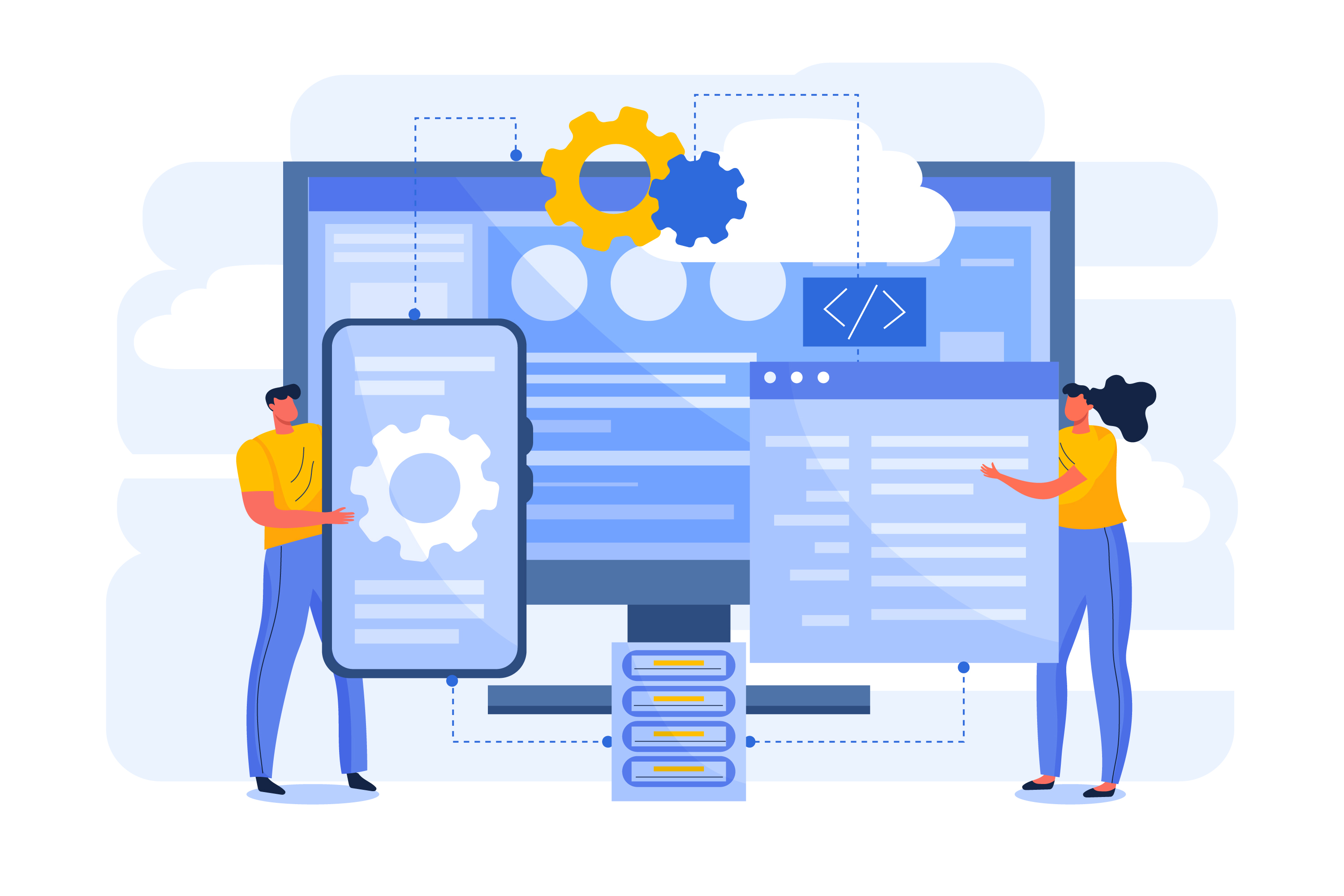Web application scalability means the ability of a website or app to handle more users or traffic without slowing down. Even with a larger load, the application should continue to function smoothly for everyone as it expands. The system's capacity to grow and handle additional requests without malfunctioning or crashing is known as scalability. It's similar to ensuring your vehicle's engine can accommodate more people and bags without stalling. Your application will remain dependable and quick even during peak usage if it has good scalability.

Advantages of Web Application Scalability
Scalability is a crucial consideration while developing a web application. It speaks to the application's capacity to expand and change in response to an increase in users or data. Application scalability enables the app to remain dependable and responsive under varying loads:
- Handles growth easily. A scalable web application can handle more users without slowing down or crashing. As your user base grows, the app can grow with it. This means your app won’t break even when it becomes popular.
- Better performance. With scalability, your app maintains good performance even during busy times. The system can adjust itself to deliver faster load times, even if a lot of people are using it at once. This keeps users happy and engaged.
- Cost-Effective. Scalable systems allow you to start small and then grow when needed. You don’t have to invest in big servers upfront. Instead, you can upgrade your resources as your needs increase, saving you money in the beginning.
- Flexibility for Future Changes. It lets you make changes to scalable applications without worrying about them falling apart. If you need to add new features or expand, a scalable system makes that easier to do without having to rebuild everything.
Scalable software web app development offers great benefits like better performance, flexibility, and cost savings. They help your app grow smoothly as your user base expands. By planning for scalability, you set your app up for long-term success.

How to Build a Scalable Web Application
Building a scalable web application is key to ensuring it can handle growth and deliver a smooth experience for users, no matter how much traffic or data comes through. If you want your app to succeed in the long run, scalability should be part of your design from the start.
Step 1: Plan for Growth from the Start
When you’re building your web app, think about what might happen as it grows. Will your app still be able to handle more users? Planning for scalability from the beginning makes things much easier later on. You don’t want to start with a system that will collapse under extra load. Make sure your app is built in a way that it can handle growth in both users and data.
Step 2: Choose the Right Architecture
The foundation of your web application matters a lot when it comes to scalability. One of the most common dynamic scalability architectures used in scalable web apps is a microservices architecture. This divides your app into smaller, independent services, each of which can be scaled up or down as needed. This way, if one part of your app needs more resources, it doesn’t affect the others.
Step 3: Use Cloud Services
Cloud hosting offers great flexibility for scalability. With cloud services, you can quickly add more resources as your needs grow. You can start small with just the resources you need and then scale up or down when necessary. Cloud platforms like AWS, Google Cloud, and Azure provide the tools to do this.
Step 4: Optimize Your Database
Databases can become a bottleneck when scaling an application. To handle this, use a database that can scale easily. A popular option is a NoSQL database like MongoDB, which scales well for large amounts of data. If you use a relational database, make sure to implement features like database sharding or replication to distribute the load.
Step 5: Focus on Load Balancing
As your app grows, traffic to your website or app will increase. To make sure your system doesn’t get overwhelmed, you need a load balancer. A load balancer distributes incoming traffic across multiple servers, ensuring that no single server bears too much load. This helps keep your application available and responsive even during peak times.
Step 6: Implement Caching
Caching helps reduce the load on your servers by storing frequently requested data in a cache rather than making your app generate it every time. This speeds up the response time and reduces the strain on your servers. Use caching techniques like server-side caching, browser caching, and content delivery networks (CDNs) to improve performance and scalability.
Step 7: Use Asynchronous Processing
Not all tasks in your web app need to be done immediately. Some processes, like sending an email or processing a file, can take a long time. If you try to do everything synchronously, your app could slow down. By implementing asynchronous processing, you allow your app to keep running smoothly, even when some tasks take time to complete.
Step 8: Monitor Performance Regularly
To keep your app scalable, it’s essential to monitor its performance. Use monitoring tools to keep an eye on how the app is doing, how much load it’s handling, and where there might be any issues. By regularly checking on your app’s performance, you can make adjustments before small problems become big ones.
Step 9: Prepare for Failures
Scaling applications is not just about handling more traffic, it’s also about handling failures. Build your app to be resilient to crashes or issues. You can do this by using redundancy, like having multiple copies of your data, and failover systems, where if one server fails, another one can take over without affecting the app.
Step 10: Continuously Test for Scalability
Testing your app’s scalability is key to making sure it can grow without running into problems. Use stress testing and load testing to simulate high traffic. This will help you identify potential weaknesses before they affect your users. Regular testing can also help you find opportunities for further optimization.

The Future of Scalable Web Applications
As technology continues to advance, the need for scalable web applications will only increase. New innovations in cloud computing, machine learning, and artificial intelligence will make it easier to scale applications faster and more efficiently. This will allow developers to build apps that can handle even greater traffic and more complex tasks with ease.
In the future, we can expect to see more intelligent systems that automatically adjust resources based on demand, reducing the need for manual intervention. Additionally, serverless computing will become more common, allowing developers to focus on building features instead of managing servers.
In conclusion, building scalable web applications takes careful planning and the right approach. By focusing on architecture, cloud services, load balancing, and other strategies, you can create a web app that can grow with your business. The future of scalable web apps looks bright, with new technologies making it easier to manage and scale applications in the years to come.
The answers to your questions
What is the greatest advantage of web-based applications?
The greatest advantage of web-based applications is that they are accessible from any device with an internet connection. Users don’t need to install software or worry about updates. Everything happens online, which makes it easy to access and use from anywhere.
What are the two main approaches for serving code and resources in a single-page application called?
The two main approaches for serving code and resources in a single-page application are client-side rendering and server-side rendering. In client-side rendering, the browser loads the app and updates the page as needed. In server-side rendering, the server sends a fully rendered page to the browser.
What does it mean for the platform to be scalable?
When a platform is scalable, it means it can handle more users, traffic, or data without breaking down. It can grow and adjust to meet increasing demands without slowing down or causing problems for users.
How to build a web-based application?
Building a web-based application starts with planning your idea and understanding the needs of your users. Next, choose the right tools and technologies like programming languages, databases, and frameworks. After that, you can design and develop the app, keeping performance and user experience in mind.
